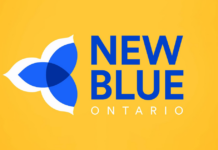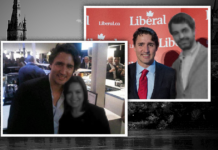Statistics Canada dedicated an entire episode of its publicly-funded podcast “Eh Sayers” to discussing drag queens, exposing kids to drag culture and correct pronoun usage.
On Aug. 21, the federal department released an episode titled “I Got 99 Problems But Being Misgendered on the Census Isn’t One” featuring host and Statistics Canada communications officer Tegan Bridge.
Appearing as guests were drag king Cyril Cinder and Statistics Canada’s Anne Milan.
“Welcome to Eh Sayers, a podcast from Statistics Canada, where we meet the people behind the data and explore the stories behind the numbers. I’m your host, Tegan Bridge, and I’m whispering because we’re listening to drag story time. Shh!” says Bridge as she began the podcast.
Throughout the half-hour-long show, the host and guests touch on Statistics Canada’s decision to survey the self-identified gender identity of Canadians in the latest census but mostly spend the time waxing about the virtues of drag queens.
“Drag kings are drag artists who present or perform a masculine persona as part of their drag performance,” explains Cinder.
“I perform a lot in bars or in very different venues, music venues. I’m also a story time performer, so I will entertain and read books to children and audiences and families of all ages.”
Cinder has in fact appeared in drag queen story times hosted by the taxpayer-funded National Arts Centre in Ottawa.
As reported by True North, Cinder’s public Instagram profile displayed X-rated content including prosthetic male genitalia and a graphic with the text “Cyril Cinder’s Bitch.” Cinder has since deleted the explicit posts.
“Why are drag story times important?” asks Bridge.
“Whether or not we are, you know, exposing kids to a positive queer role model for the first time, or to someone who’s maybe a bit more gender nonconforming, doesn’t quite match the boys and girls archetypes and binaries that they’re often exposed to at home and at school and in media,” replies Cinder.
“It’s an opportunity for them to see that and see that that’s not that strange actually, that that’s okay, that there’s nothing too weird about being fabulous and sparkly and excited and fun.”
Statistics Canada’s Bridge also framed gender binaries as a “problem” that needs to be dealt with.
“The gender binary can be used to control people. It can be used to force people into things that they don’t want for themselves, right?” Cinder explains.
“What are your preferred pronouns?” asks Bridge.
“Yeah, so I actually identify as non-binary out of drag, but my drag character, Cyril Cinder, is a man that is the gender identity of that character. So in drag, I exclusively use he/him pronouns, but out of drag I use she/he/they pronouns. Any pronouns really I’m comfortable with. But whenever I’m referring to Cyril Cinder, the drag character, I always prefer to use he/him,” explains Cinder.
Bridge also insinuated that gender was a “performance” people choose to put on at any given time before touting the department’s decision to add gender identity options in the 2021 census.
“It was historic to include this information. It’s the first time that census data was released on the transgender and non-binary population among all the countries around the world. And so we’re very proud of that,” says Milan.






















